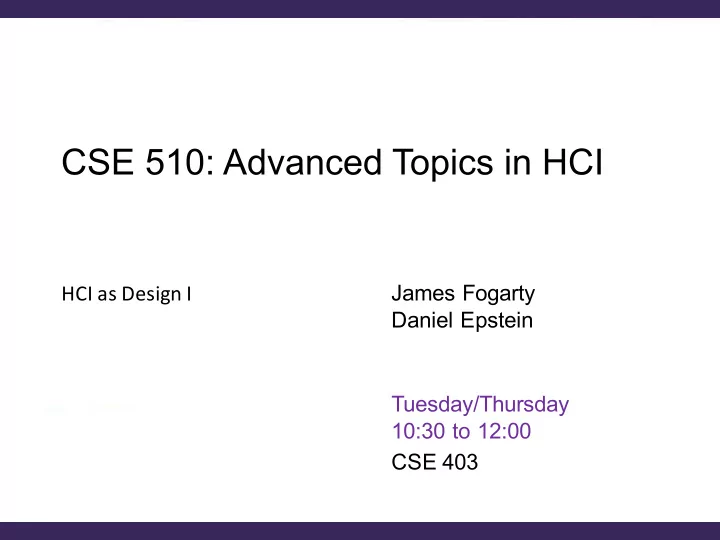

Norman’s Execution-Evaluation Cycle Gulf of Evaluate Evaluation Goals Interpret State Goals Observe State Form Intention System Change Develop Action Plan Gulf of Execute Execution Actions
Bridging the Gulfs Gulf of Execution: “How do I do it?” Commands and mechanisms need to match the goals, thoughts, and expectations of a person Gulf of Evaluation: “What does it mean?” Output needs to present a view of the system that is readily perceived, interpreted, and evaluated People build mental models to anticipate and interpret system response to their actions What can I do? How do I do it? What result will it have? What is it telling me?
Cooper’s Mental Model Terminology Implementation Model How it works (aka Design Model, Designer’s Conceptual Model) Manifest Model These terms How it presents itself are sloppy and (aka System Image) ambiguous Mental Model out in the world How a person thinks it works (aka User Model, User’s Conceptual Model)
Manifest and Mental Models Implementation Mental Model Model Manifest Model Designer projects their model into an artifact Person forms their model based on interaction People struggle until model matches manifest model Update mental model in response to breakdowns Not necessarily matching the implementation model
Mental Models Problem: freezer too cold, fresh food just right freezer fresh food
Manifest Model What if I want to make just the freezer warmer?
A Sensible Mental Model “The Freezer Control controls the freezer temperature and the Fresh Food Control controls the fresh food temperature”
The Implementation Model
A Problem with Feedback
The Implementation Model Why do we have a problem? Can you fix the problem?
The Implementation Model Why do we have a problem? Cost constraints Can you fix the problem? Make controls correspond to a person’s mental model Make controls correspond to the implementation model
Building the Right Model Having the right model helps people bridge the Gulf of Execution and the Gulf of Evaluation How can we help people build the right models: Affordances Metaphors Visibility Knowledge in the World Constraints Mapping Consistency Modes
Affordances Visual clue to interaction knobs afford turning levers afford moving buttons afford pushing
Affordances “The affordances of the environment are what it offers animals, what it provides or furnishes, for good or ill.” Gibson, part of an ecological approach to psychology “The term ‘affordance’ refers to the perceived and actual properties of the thing, primarily those fundamental properties that determine just how the thing could possibly be used.” Norman
What’s the Affordance?
Affordances
Affordances Technology affordances are often based in affordances from the physical world
Affordances What is the affordance here? Where does it come from?
Affordances What is the affordance here? Knurling Where does it come from?
Sequential Affordance Acting on a perceptible affordance leads to information indicating new affordances 93
Sequential Affordance Acting on a perceptible affordance leads to information indicating new affordances Now does the door push or pull? 94
Nested Affordances Affordances due to spatial relationships revealing what actions can be done Proximate to, contained in, part of 95
In Other Words An affordance is what a thing communicates about how it can be used, often by its appearance “In general, when the apparent affordances of an artifact matches its intended use, the artifact is easy to operate. When apparent affordances suggest different actions than those for which the object is designed, errors are common.” Challenges arise if Gaver there is a mismatch between implied use versus intended use 96
False Affordances When there is perceptual information suggesting an implied use that does not exist OK (Just an image of a button, not one that responds) 97
False Affordances
False Affordances
False Affordances
Recommend
More recommend